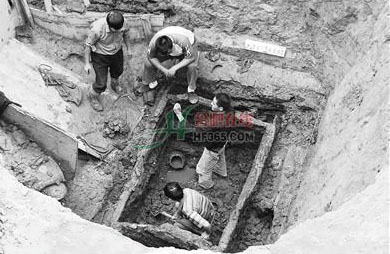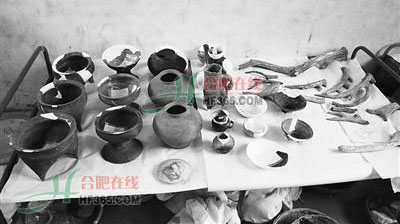A Tomb of High Chief Found in Suzhou, Anhui
Recently, the Institute of Cultural Property and Archaeology (ICPA) of Anhui Province excavated a tomb of the Longshan period at the Luchengzi village in Suzhou, Anhui. This is the first tomb of a high chief found in Anhui Province. The structure and funeral goods of the tomb reveal an advanced social development in northern Anhui.

Based on survey and coring, the ICPA exposed 3500m2 at the site and found rich remains of the Longshan period and ascertained the date of the tomb. The tomb, filled with pebbles and charcoal, is furnished with a wooden chamber and a wooden coffin. The space between the chamber and coffin is filled with blue plaster, which insulates the coffin from weathering. These deliberate treatments denote that the occupant was a high chief.

The Luchengzi site, a diachronic one, witnesses human occupation of the Dawenkou, Longshan, Shang, Zhou, Han, Tang, and all the way through the modern time. From the excavation, 600 artifacts of various kinds were uncovered. Apart from bronze, iron, and pottery wares, a large quantity of animal bones and finely ground bone and shell artifacts were found. The discovery of shell sickles indicates that sickles were used to reap crops four thousand years ago.
Among the numerous bronze wares, a Han dynasty bronze iron, which is comprised of a dish and a handle, is most noteworthy. The first recorded iron in the world was a clay iron made 3000 years ago. This Han dynasty bronze iron, a rare find in Anhui Province, appears to improve a great deal from the clay iron.
(Translated by Zhang Liangren)

